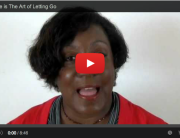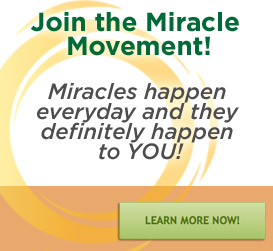 Eckhart Tolle is one of my favorite spiritual writers. His words of not only wisdom, but real truth, are moving and palatable for everyone to understand. As this month’s primary article I am presenting an interview article between Eckhart Tolle and Kathy Juline, a Science of Mind practitioner and the author of the article. The interview focuses on Tolle’s book, A New Earth. The interview is enlightening, revealing poignant glimpses into the deeper meaning of the concepts he wrote about. Although I have not read it yet I plan to make this my next must read. Perhaps this interview will inspire you as it did me to read further, A New Earth.
Eckhart Tolle is one of my favorite spiritual writers. His words of not only wisdom, but real truth, are moving and palatable for everyone to understand. As this month’s primary article I am presenting an interview article between Eckhart Tolle and Kathy Juline, a Science of Mind practitioner and the author of the article. The interview focuses on Tolle’s book, A New Earth. The interview is enlightening, revealing poignant glimpses into the deeper meaning of the concepts he wrote about. Although I have not read it yet I plan to make this my next must read. Perhaps this interview will inspire you as it did me to read further, A New Earth.
Here is the article written by Kathy Juline and the compelling responses of Eckhart Tolle…
“Tolle has taken the essence of spiritual wisdom from such great teachers as Jesus and Buddha, and put this wisdom into meaningful expression for today, just as Ernest Holmes has done through his formulation of a Science of Mind and Spirit. When Holmes says of spiritual mind treatment that it is “clearing the thought of negation, of doubt and fear, and causing it to perceive the ever-presence of God,” he is gleaning the same wisdom from ancient teachings that Tolle has also done in his books. Now, with A New Earth, he makes this key to enlightenment—being fully conscious in this very moment—real and alive for us in today’s words and for today’s world. His book title comes from the biblical passage in Revelation promising a new heaven and a new earth. It is a metaphor for the state of conscious awareness of infinite being (heaven), which continually comes forth in a new way into new form (earth). Because his meaning goes beyond an intellectual grasp, Tolle’s ideas ask for contemplation. They are more to be opened up to then be studied. “Words are only pointers,” he says. “What is being communicated lies beyond words, but we can use them to go at least in the direction of what is meant and that is helpful.”
KJ: In your vision of a new earth, the purpose of life involves what you call awakened doing. What do you mean by this?
ET: Most people treat the present moment as if it were an obstacle that they need to overcome. Since the present moment is Life itself, it is an insane way to live.
In awakened doing there is complete internal alignment with the present moment and whatever you are doing right now. The doing is then not primarily a means to an end, but an opening for consciousness to come into this world. Aligning yourself with the Now is aligning yourself with universal purpose, the purpose of the whole. What is the purpose of the whole? The birth and flowering of consciousness. The whole then guides you in whatever you think or do.
As I explain in A New Earth, awakened doing has three modalities, depending on circumstances and the nature of the activity. They are acceptance, enjoyment, and enthusiasm. If there is neither acceptance, enjoyment, or enthusiasm in what you do, you are out of alignment with universal purpose. You are creating unhappiness, that is to say suffering in one form or another. One way of defining the ego is simply this: a dysfunctional relationship with the present moment. What I refer to as the “new earth”—the outer forms created by awakened doing—arises as more people realize that their purpose is to allow consciousness to emerge through whatever they do.
KJ: Do you believe that humanity is ready for this transformation?
ET: Yes. I see signs that it is already happening. For the first time there is a large scale awakening on our planet. Why now? Because if there is no change in human consciousness now, we will destroy ourselves and perhaps the planet. The insanity of the collective egoic mind, amplified by science and technology, is rapidly taking our species to the brink of disaster. Evolve or die: that is our only choice now. Without considering the Eastern world, my estimate is that at this time about ten percent of people in North America are already awakening. That makes thirty million Americans alone, and in addition to those people in other North American countries, about ten percent of the population of Western European countries are also awakening. This is probably enough of a critical mass to bring about a new earth. So the transformation of consciousness is truly happening even though they won’t be reporting it on tonight’s news. Is it happening fast enough? I am hopeful about humanity’s future, much more so now than when I wrote The Power of Now. In fact that is why I wrote that book. I really wasn’t sure that humanity was going to survive. Now I feel differently. I see many reasons to be hopeful.
KJ: You say in your new book that for humanity to make this transformation, there needs to be a shift from object consciousness to space consciousness. Can you explain more about that?
ET: Yes. I am saying that I see the emergence of space consciousness as the next stage in the evolution of humanity. By space consciousness I mean that in addition to our being fully conscious of things—that is to say of sense perceptions, thoughts, emotions, and whatever happens in our lives—there is at the same time an undercurrent of awareness or Presence operating in us. Awareness implies that we are not only conscious of things, such as the objects and the people around us, but we are also conscious at the same time of being conscious. Conscious of the timeless I AM without which there would be no world. We can sense an inner alert stillness in the background while things happen in the foreground. That is the unconditioned. That is true intelligence. If there is only object consciousness in our lives, we remain trapped in the conditioned, trapped in form, which creates an appearance of separation. We are always trying to change the form or are resisting it in some way. We are looking to the world of form for salvation. But when we are aware of space consciousness, aware of being aware, we are freed from identification with form, which is ego, and there arises within us a sense of oneness with the whole and with our Source.
KJ: So attachment and struggle are released.
ET: That’s right, because in space consciousness there is no future and no past. There is only the present, and it is always free. This is what the Buddhists call “emptiness” and Jesus calls “the fullness of life.” It is the same thing, or rather no-thing. Because it is an opening into the vertical dimension, which has no limit, the present is never confining or fraught with problems. Problems need time, that is to say past and future, to survive. On the other hand, if we let our focus drift back to the past or forward to the future, we are functioning in the horizontal dimension, and this results in an expanded differentiation of forms deriving from ego constructs. Entering the vertical dimension requires a high degree of Presence. The Now needs to be the main focus of our attention. Of course, we need the concept of time in order to function, for example, to schedule this interview. But the point is not to be limited to that dimension alone. The arising of space consciousness—a shift to vertical rather than horizontal awareness—is the next stage in the evolution of humanity, and it’s happening more and more as our awareness remains in the now moment.
KJ: Can you suggest some ways to stay focused in the now?
ET: One thing we can do is to notice the little things all around us, paying attention to details such as the birds in the trees and the flowers in the garden or the park—just notice the beauty everywhere, even the smallest things. To notice seemingly insignificant things requires alertness. That alertness is the key. It is the unconditioned. It is consciousness itself. Another helpful practice is to watch the breath, and breathe consciously. If we are paying attention to our breath, we cannot be thinking of anything else at the same time. Our attention is in the now moment and not on our worries about yesterday or our plans for what we will do next week. We are just breathing, not thinking. Because the practice of breath meditation takes us out of the activity of thought, it is an effective way to awaken. In fact, breath, because it has no form as such, has traditionally been equated with spirit, the formless One Life. In the German language, the word atmen, meaning “breathing,” is derived from atman, which in Sanskrit, the language of ancient India , refers to the innermost essence or universal self.
KJ: Why is it a desirable practice to free the mind from thinking?
ET: Thinking, or more precisely identification with thinking, gives rise to and maintains the ego, which, in our Western society in particular, is out of control. It believes it is real and tries hard to maintain its supremacy. Negative states of mind, such as anger, resentment, fear, envy, and jealousy, are products of the ego. When the ego is in control, these states of mind appear to us to be justified and also to be caused by some external factor. Usually another person is blamed for these feelings. Their true cause, however, is not to be found in the content of your life, but in the very structure of the egoic mind. It needs enemies because it defines its identity through separation, and so it emphasizes the other-ness of others. For this reason, letting the ego be in control leads ultimately to violence, fighting, and war. This is madness, but the ego doesn’t see it that way.
The film A Beautiful Mind does a good job of depicting how the mind can delude us if we are not aware that it is controlling us. It’s the true story of a man who is a genius but he’s also insane. The audience doesn’t know that he’s insane until he himself realizes it as the story unfolds. The film makes the point that when you become aware that you are insane, you are no longer insane. So when you become aware of your mind, you are not identified with your mind anymore. A new dimension of consciousness has come in. The madness is caused by thinking without awareness, and thinking without awareness is how the ego keeps us in its grip.
KJ: Are you suggesting that we just change the content of our thoughts away from negativity or rather that we cease the activity of thinking?
ET: Positive thinking is certainly preferable to negative thinking. But to be in the consciousness of the now moment and to practice awareness of the divine Presence is what Jesus means in his Sermon on the Mount when he says, “Take no thought for your life.” From this state of Being comes great creativity. “Change your thinking” can really be understood as telling us to cease the constant busy activity of the mind, which is repetitive, futile, and often negative. Instead of constantly thinking, we become still and quiet, and we become conscious of being conscious. This is the realization of I AM, the realization of Being, our essence identity. When we are rooted in that, thinking becomes the servant of awareness, rather than a self- (ego) serving activity. It becomes creative, empowered.
KJ: You talk in your book about the pain-body, both personal and collective. What do you mean by the pain-body?
ET: The pain-body is my term for the accumulation of old emotional pain that almost all people carry in their energy field. I see it as a semi-autonomous psychic entity. It consists of negative emotions that were not faced, accepted, and then let go in the moment they arose. These negative emotions leave a residue of emotional pain, which is stored in the cells of the body. There is also a collective human pain-body containing the pain suffered by countless human beings throughout history. The pain-body has a dormant stage and an active stage. Periodically it becomes activated, and when it does, it seeks more suffering to feed on. If you are not absolutely present, it takes over your mind and feeds on negative thinking as well as negative experiences such as drama in relationships. This is how it has been perpetuating itself throughout human history. Another way of describing the pain-body is this: the addiction to unhappiness.
KJ: Can you suggest a way to eliminate the pain-body?
ET: Yes. We release it by cutting the link between the pain-body and our thought processes, so that we no longer feed the pain-body with our thinking. Every negative thought has a similar frequency to the pain-body and so feeds it. It cannot feed on positive thoughts. When the pain-body no longer runs the internal dialogue of our compulsive thinking, we become aware of it directly. We feel the emotion in our body, and so we bring awareness to it, the light of consciousness. The old emotion is then transmuted into consciousness in the same way that a fire transmutes everything into itself. So disidentification from the emotion and just being in the now moment is the way to stop the cycle of constantly recreating painful experiences.
KJ: Fear seems to lie behind most negative emotions. How can it be released? You speak about a process of disidentification. How does it work?
ET: Fear arises through identification with form, whether it be a material possession, a physical body, a social role, a self-image, a thought, or an emotion. It arises through unawareness of the formless inner dimension of consciousness or spirit, which is the essence of who you are. You are trapped in object consciousness, unaware of the dimension of inner space which alone is true freedom.
Every fearful thought is about future, is about something that could or may happen. Most people are familiar with the “mental movies” that cause stress and anxiety and keep you awake at night, while your body lies in a warm and comfortable bed. The moment you recognize a fearful thought for what it is, that is to say futile and self-destructive mind activity, you begin to disidentify from it. Awareness or Presence then takes over from thinking. I am not saying that you don’t think anymore, just that you no longer confuse it with who you are. Thinking becomes rooted in awareness rather than being autonomous and self-serving, which is the ego.
Every pain-body contains a great deal of fear, since fear is the primordial negative emotion. How do we deal with that? Here again, you recognize it for what it is: the pain-body, an accumulation of old emotion. Once you recognize it, it cannot take over your mind, feed on your negative thoughts, and control your internal dialogue as well as what you say and do. Once the pain-body has come up, don’t fight or resist it. It is part of the “isness” of the present moment with which you always need to be in inner alignment. So you allow it to be there. If you don’t feed it anymore, it loses its energy charge and the negative emotion undergoes transmutation.
KJ: You speak in your book of the ego’s incessant wanting and its insatiable need for more. Wouldn’t certain things we want be considered worthwhile, though, such as wanting to become a better person?
ET: The desire to become a better person is usually to do with wanting to improve how I feel about myself, how I see myself, or how I am seen by others. It is to do with mental image-making, that is to say, ego. That includes, of course, wanting to become enlightened or more spiritual. Awakening or spiritual realization is the discovery that you don’t need to add anything to yourself in order to be yourself fully. You don’t need to try to become good, but allow the goodness that is within you, inherent in Being and inseparable from who you are, to emerge.
KJ: You say that as people awaken to their true self and their life purpose, a new earth is created. What is this new earth like?
ET: I don’t want to speculate about the characteristics of the new earth, but whatever it is, it will be an outer manifestation of the new heaven, the inner realm of consciousness. It will arise out of the awakened consciousness that is unconditioned and free from the illusions of ego. Hints of what the new earth will be like are found in the Bible, where it says, for example, that “the wolf shall dwell with the lamb ….” One way of understanding this is that what we perceive as external reality is one with and a reflection of collective human consciousness, so a change in consciousness will change not only the world we create, but our entire way of perceiving reality.
As human beings awaken from the dream of identification with form, consciousness can begin to create form without losing itself in it. The true essence of who each of us is, is being realized.
The coming of a new heaven and a new earth, predicted both in the Old and the New Testaments, is an apt metaphor for this shift in consciousness. This shift, however, is not a future state to be achieved or even believed in. A new heaven and a new earth are arising within each of us at this moment. So awakening to your life’s purpose is not to try to look to the future and expect fulfillment there but to stay in the moment, allowing the ego to dissolve. Your life’s inner purpose is primary, and your inner purpose is to awaken, to be conscious. In whatever you do, your state of consciousness is the primary factor.
by Kathy Juline, Science of Mind
Copyright (c) 2017, Eckhart Teachings Inc.
http://www.eckharttolle.com/article/Awakening-Your-Spiritual-Lifes-Purpose




